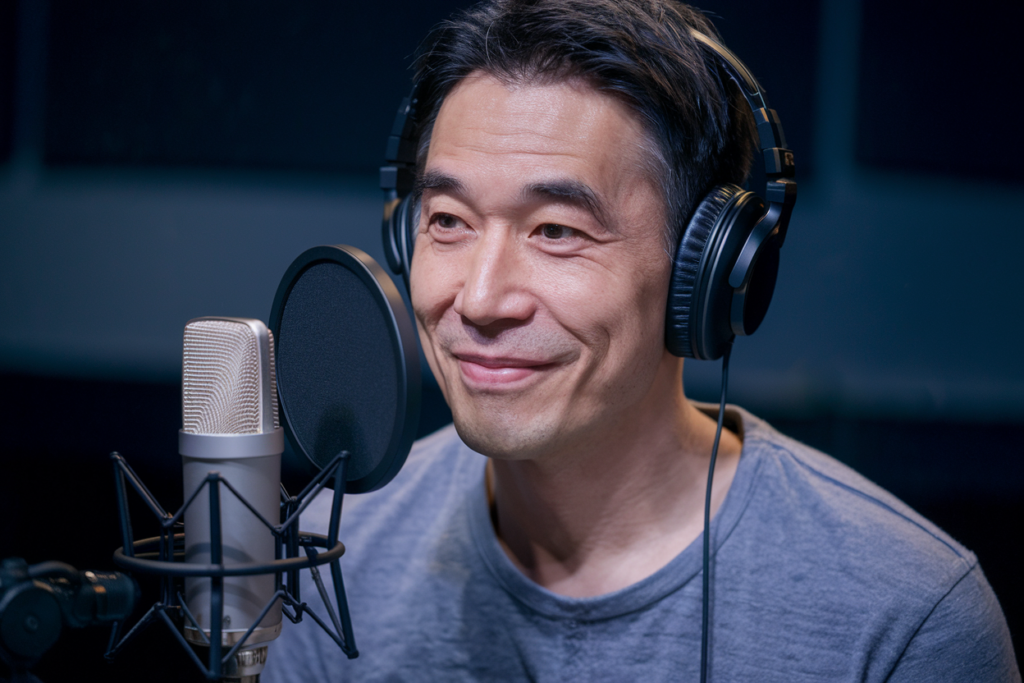Key Takeaways
- Diverse Linguistic Landscape: Japan has over 15 main dialects, each contributing unique pronunciation, vocabulary, and grammar that enrich the country’s cultural identity.
- Media’s Role in Representation: Media forms like anime, television, and print reflect Japanese dialects, enhancing storytelling by embedding cultural nuances and engaging local audiences.
- Character Authenticity: Voice actors skillfully employ regional accents in media to create relatable characters, deepening audience connections through familiar speech patterns.
- Cultural Identity and Pride: Dialects serve as badges of honor for locals, fostering pride in regional heritage while allowing broader audiences to appreciate Japan’s diversity.
- Stereotyping Risks: While dialect representation can enhance authenticity, it may also lead to oversimplified portrayals or negative stereotypes if not balanced with genuine representation.
- Educational Insights: Understanding these dialects offers insights into Japan’s social landscape and linguistic heritage, enriching viewers’ experiences with Japanese media.
Have you ever wondered how Japanese dialects shape the media landscape? The media reflection of Japanese dialects offers a fascinating glimpse into cultural identity and regional diversity. From anime to news broadcasts, these dialects not only enrich storytelling but also highlight the unique characteristics of their speakers.
As you dive deeper into this topic, you’ll discover how different regions express themselves through language, influencing everything from character development to audience engagement. Understanding these nuances can enhance your appreciation for Japanese media and its rich tapestry of voices. So let’s explore how dialects reflect society and culture in Japan, revealing insights that go beyond mere words.
Overview of Japanese Dialects
Japanese dialects, or hōgen, reflect the rich linguistic diversity within Japan. With over 15 main regional dialects, each brings unique characteristics that contribute to the country’s cultural tapestry. These dialects vary significantly in pronunciation, vocabulary, and grammar.
For instance, the Kansai dialect spoken in Osaka and Kyoto is known for its distinct intonation and informal expressions. In contrast, the Tohoku dialect features elongated vowel sounds and certain grammatical peculiarities that set it apart from standard Japanese (Tokyo dialect).
Media plays a crucial role in showcasing these dialects. Anime often uses local accents to portray characters authentically, enhancing storytelling by embedding cultural nuances into dialogues. Similarly, news broadcasts may incorporate regional speech patterns to engage local audiences effectively. This authenticity resonates with viewers and listeners, making content more relatable.
Voice actors skillfully utilize these dialects to breathe life into their characters. Their ability to switch between different accents adds depth and richness to performances. Audiences connect more profoundly when they hear familiar speech patterns reflecting their own regional identities.
Understanding these dialects not only enriches your appreciation of Japanese media but also highlights the complexity of Japan’s social landscape. Whether you’re watching anime or following news reports, recognizing these linguistic variations enhances your viewing experience while providing insights into Japan’s diverse culture.
The Role of Media in Language Reflection
Media serves as a vital conduit for showcasing Japanese dialects, reflecting cultural nuances and regional identities. Through various forms like television, film, and print, these dialects enrich narratives and deepen audience engagement.
Television and Film Representation
Television and film are powerful platforms for representing Japan’s diverse dialects. Popular shows often feature characters that speak in their regional accents, adding authenticity to the storytelling. This use of local speech patterns allows viewers to connect with the characters on a personal level. For example, voice actors skillfully employ different dialects to embody their roles convincingly; this technique enhances character development and resonates strongly with audiences familiar with those accents.
Moreover, these media forms often highlight specific cultural elements tied to each dialect. When you hear a character from Kansai delivering punchlines in their distinct intonation or a Tohoku resident sharing heartfelt stories using elongated vowel sounds, it creates an immersive experience. These portrayals not only entertain but also educate viewers about Japan’s rich linguistic heritage.
Print Media and Literature
Print media plays an equally crucial role in reflecting Japanese dialects through literature and journalism. Authors frequently incorporate regional language features into dialogues to capture the essence of their characters’ backgrounds accurately. By doing so, they offer readers insights into the social contexts that shape individual experiences within different regions.
Journalistic pieces often showcase interviews with locals speaking in their native dialects, providing readers with authentic perspectives on current events or cultural phenomena. This practice brings depth to reporting by emphasizing local voices that might get overlooked otherwise.
In both literature and journalism, utilizing unique expressions can make the content more relatable for readers who share similar backgrounds or experiences. It fosters appreciation for linguistic diversity while inviting others to explore new ways of understanding society through language.
Through television, film, print media, and literature alike, Japanese dialects reveal layers of meaning that contribute significantly to cultural identity—transforming mere words into vivid reflections of life across Japan’s varied landscapes.
Impact on Cultural Identity
Japanese dialects play a crucial role in shaping cultural identity, reflecting regional pride and contributing to the nuances of storytelling across various media. Understanding how these dialects influence characters and narratives enhances appreciation for Japan’s rich social tapestry.
Dialect and Regional Pride
Dialect serves as a badge of honor for many Japanese people. Each region boasts its unique linguistic traits, instilling a sense of belonging among locals. When you hear familiar accents in anime or film, it resonates deeply, creating connections that transcend mere entertainment. Characters who speak with local dialects embody regional characteristics and attitudes, making them relatable to audiences from those areas. This portrayal fosters pride in cultural heritage while allowing viewers outside those regions to explore and appreciate Japan’s diversity.
Stereotyping and Misrepresentation
Despite the positive aspects of dialect representation, stereotyping can mar its impact. Media sometimes exaggerates dialect features for comedic effect or dramatic tension, leading to misrepresentations that oversimplify complex identities. You might encounter characters whose exaggerated accents reinforce negative stereotypes or limit their depth. Such portrayals can alienate viewers who identify with those dialects while reducing their rich cultural significance to mere caricatures. Striking a balance between authenticity and creativity remains essential in portraying Japanese dialects accurately within media contexts.
By recognizing both the pride associated with regional language and the pitfalls of stereotyping, you gain insight into how Japanese media reflects broader cultural narratives through its use of diverse dialects.
Case Studies of Media Reflection
Japanese dialects play a significant role in various media forms, particularly in anime and news coverage. Examining these case studies reveals how dialects contribute to character authenticity and regional representation.
Dialect Usage in Popular Anime
Anime frequently showcases distinct Japanese dialects, providing viewers with an immersive experience. Characters often use their regional accents, making them more relatable and authentic. For instance, you might notice characters from Osaka employing the Kansai dialect, which features unique expressions and intonations that set them apart from those speaking standard Japanese.
Voice actors bring these dialects to life through their performances. They skillfully switch between different accents to embody their roles fully, enhancing the storytelling process. This attention to detail not only adds depth but also allows you to connect with characters on a personal level. The portrayal of local speech patterns evokes a sense of place that enriches the narrative.
Regional Varieties in News Coverage
News broadcasts also reflect Japan’s diverse linguistic landscape by incorporating regional dialects into their reporting. When local news anchors use familiar accents or phrases specific to their area, it resonates with audiences and fosters a sense of community connection.
Regional language features can enhance interviews conducted with locals as well. By utilizing voice talents who are native speakers or fluent in various dialects, broadcasters provide insights that feel genuine and accessible. This practice helps ensure that stories remain relevant to viewers while showcasing the richness of Japan’s cultural fabric.
In both anime and news media, the thoughtful reflection of Japanese dialects highlights not just differences in language but also important social nuances tied to identity and culture across regions.
Conclusion
Japanese dialects serve as a powerful lens through which you can explore the rich tapestry of culture and identity in Japan. By engaging with these regional accents in media, you gain access to deeper narratives that resonate on personal and societal levels. The authenticity brought by dialects enhances your viewing experience, making characters more relatable and stories more immersive.
As you appreciate the nuances of language presented in anime and news broadcasts, remember that each dialect carries its unique history and significance. This connection fosters a greater understanding of Japan’s diverse cultural landscape. Embracing this complexity not only enriches your media consumption but also allows for a broader appreciation of the intricate social dynamics at play across regions in Japan.
Frequently Asked Questions
What are Japanese dialects, and how many are there?
Japanese dialects, known as hōgen, are regional variations of the Japanese language. There are over 15 main dialects, each with unique features in pronunciation, vocabulary, and grammar. Examples include the Kansai dialect, famous for its distinct intonation, and the Tohoku dialect, noted for its elongated vowel sounds.
How do dialects impact storytelling in media?
Dialects enhance storytelling by adding authenticity to characters and narratives. In anime and news broadcasts, using local accents helps portray characters more realistically and allows audiences to engage more deeply with the storylines that reflect their cultural backgrounds.
Why is it important to understand Japanese dialects in media?
Understanding Japanese dialects enriches viewers’ appreciation of media by highlighting cultural nuances tied to regional identities. This knowledge provides deeper insights into Japan’s social landscape and enhances the overall viewing experience through relatable character development.
How do voice actors contribute to the portrayal of dialects?
Voice actors play a crucial role by skillfully switching between different dialects during performances. Their ability to capture the essence of various regional accents makes characters more relatable and authentic while enhancing audience engagement through emotional connections.
What potential issues arise from portraying Japanese dialects in media?
Exaggerated portrayals of dialects can lead to stereotyping or misrepresentations that oversimplify complex identities. It’s essential for creators to strike a balance between authenticity and creativity when depicting these diverse linguistic variations in media contexts.







